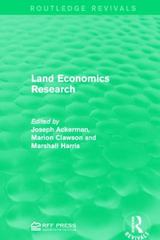. The light poles are center poles only 67 meters apart with 2 bulbs each (similar to Figure 1). The bulb size is 400 watts. The installation cost is 3500 S/pole (includes cost of pole, foundation, cabling, bulbs ...etc. ). The accidents data were collected over a section of 87.8 kilometers of the lighted freeway. Electricity costs 0.10 $/kWh. . . The poles are assumed to be lighted at 12 hours per day. The service life of the pole and bulbs is 5 years. 1. Calculate the conventional B/C ratio for the above lighted section of the freeway using a study-period of 5 years at i = 6% per year. Comment on the result. 2. The results of the previous preliminary B/C ratio analysis (done in the 1* requirement) encouraged the development of four lighting options, as follows: Option Description A Implement the plan as detailed above; light poles every 67 meters at a cost of $3,500 per pole using the 400 watts bulbs. Install light poles at twice the distance apart (134 meters) at a cost of $3,500 B per pole using the 400 watts bulbs. This is estimated to cause the accident prevention benefit to decrease by 30%. C Install cheaper poles, plus slightly lowered lumen bulbs (350 watts) at a cost of $2,000 per pole; place the poles 67 meters apart. This is estimated to reduce the benefit by 25%. Install cheaper poles for $2,000 per pole with 350-watt lightbulbs and place D them 134 meters apart. This plan is estimated to reduce the accident prevention measure by 50%. Use a conventional B/C ratio analysis to compare the four alternatives to determine the best option using a study-period of 5 years at i = 6% per year. 3. How many accidents could be prevented on the unlighted portion if it were lighted? 4. What would the lighted, night-to-day accident ratio have to be to make alternative A economically acceptable by the conventional B/C ratio?\fQuestion 1: (30%) Highway lighting (see Figure 1) and its role in accident reduction Poor highway lighting may be one reason that causes more traffic accidents to occur at night. Traffic accidents are categorized into different types by severity and value. The average monetary value of the accident damage is $ 5,000. One method to measure the impact of lighting is to compare day and night accident rates for lighted and unlighted highway sections with similar characteristics. Observed reductions in accidents caused by lighting can be translated into monetary estimates of the benefits (B) of lighting. Available information: Freeway accident data were collected in a 5-year study on two sections of a highway (lighted and unlighted sections). The average annual number of accidents recorded in the two sections is presented here. Average Annual number of Accidents Recorded Unlighted Lighted Day Night Day Night 379 199 2069 839 First you need to calculate the ratio of night to day accidents for both the unlighted and lighted freeway section. If this ratio is smaller for the lighted freeway section, then this indicates that the lighting was beneficial. To quantify the benefit, the accident rate ratio from the unlighted section will be applied to the lighted section. This will produce the number of accidents that were prevented. Then, you can calculate the benefits (B) of lighting according to the following equation: B = Number of prevented accidents x Average cost of accident damage









